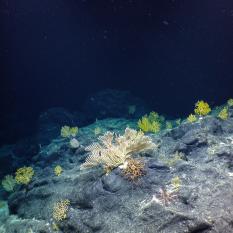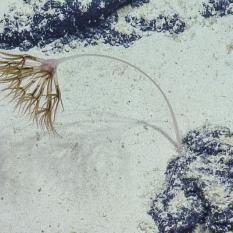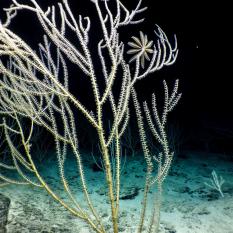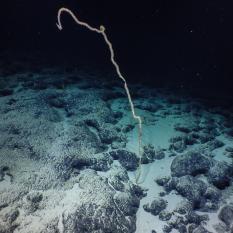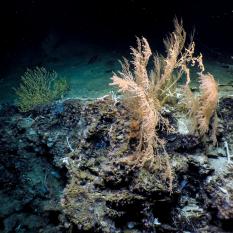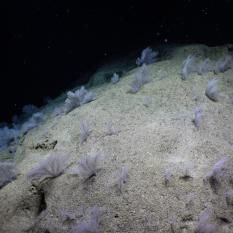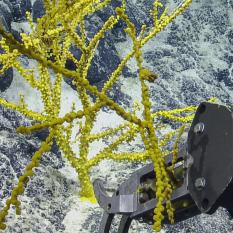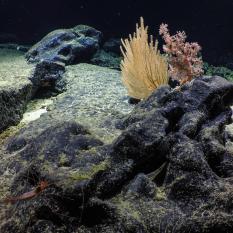Get To Know Deep Sea Corals of the Central Pacific
Many people are surprised when out of the inky darkness of the deep sea, our team calls out “Look there’s a coral!” Deep sea corals are a beautiful and widely diverse group of animals found on many Nautilus expeditions. Deep water corals share many similarities with shallow corals, like being in the phylum Cnidaria, having a basic body plan of polyps with feeding tentacles connected to other polyps through a tissue matrix, and exhibiting diverse structure from individual polyps to wildly-shaped colonies, to reefs with multiple species building upon one another’s structure. However, unlike their shallow-water relatives, deep sea corals do not rely on photosynthetic algae (zooxanthellae) to use sunlight to produce food for the animal. Deep water corals capture all of their food from marine snow and particulates in the water column. While shallow-water corals are contained only to tropical latitudes and sunlit waters, deep sea corals live on the seafloor throughout the world’s ocean, from tropical to polar regions. Let’s explore some of the diversity of corals spotted in the central Pacific Ocean to learn more about these important habitat creators in the deep ocean.

Kingman Reef, Palmyra Atoll, and Jarvis Island
Deep waters in the remote central Pacific remain some of the most poorly studied environments on Earth. This expedition will focus on exploring deep-water features in the vicinity of Kingman Reef, Palmyra Atoll, and Jarvis Island within the Pacific Remote Islands Marine National Monument. The waters of these remote Pacific territories are among the least explored U.S. holdings in the Pacific Ocean.
